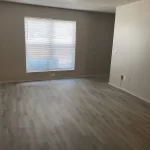Managing affordable housing takes real dedication—and when you’re juggling LIHTC compliance and the details of Section 42 regulations, it can start to feel overwhelming. The Next Available Unit Rule is one of those things that sounds simple but can trip you up if you’re not careful. That’s why this guide is here—to break things down in a way that actually makes sense. You’ll learn how the rule works, how it affects your properties, and how to avoid Available Unit Rule violations that could put your tax credit eligibility at risk.
Understanding the Next Available Unit Rule
Getting familiar with the Next Available Unit Rule is a must if you’re involved in LIHTC property management. It’s not just about filling vacancies—it’s about maintaining eligibility, staying aligned with rent restrictions, and avoiding unnecessary IRS audits.
What Is the Next Available Unit Rule?
The Next Available Unit Rule is part of Section 42 regulations, and it comes into play when a tenant’s income goes over the allowed LIHTC income limits. If that happens, the next unit that becomes available in the building must be rented to a qualified low-income tenant. It’s a critical rule for maintaining LIHTC compliance and protecting your affordable housing tax credits.
How It Affects LIHTC Properties
If you don’t follow the Next Available Unit Rule, your property could lose its tax credit eligibility. Violations can trigger Available Unit Rule violations, which may lead to IRS reporting, compliance audits, and delays in receiving credits. It all starts with tracking income limits and understanding how tenant changes can impact your status.
Ensuring Compliance with Section 42
Maintaining LIHTC compliance means constant monitoring of Section 42 regulations. That includes:
- Verifying income annually
- Managing units based on rent restrictions
- Keeping accurate records to prepare for IRS audits
What Is the 40 to 140 Rule?
The 40 to 140 rule works hand-in-hand with the Next Available Unit Rule and affects how you qualify tenants based on income levels.
Explanation of Income Limits & Compliance
This rule refers to income percentages tied to LIHTC income limits. When a tenant exceeds 140% of the qualifying income, the Next Available Unit Rule kicks in. Accurate tenant income qualification is crucial to avoid slipping into Available Unit Rule violations.
How It Affects Tenant Qualification
Overlooking the 40 to 140 rule can lead to unqualified tenants, jeopardizing your tax credit eligibility. That means more IRS reporting, more compliance audits, and possibly losing out on affordable housing tax credits. Good LIHTC property management can prevent that.
Compliance Support for LIHTC Properties
We support developers in navigating LIHTC compliance support with confidence, keeping Section 42 regulations in check at every step.
Key Requirements for Property Owners
As property managers, you’re responsible for:
- Monitoring LIHTC regulations
- Keeping detailed tenant files
- Tracking rent restrictions and income limits
- Meeting all IRS reporting deadlines
Resources to Avoid Noncompliance
Here are tools we recommend:
- Compliance audits schedules
- Periodic IRS audits prep
- Annual reviews of corrective action plans
- Training staff on compliance best practices
Final Adoption of the Available Unit Rule
With the Final Adoption of the Available Unit Rule, recent updates have clarified expectations under Section 42 regulations.
Understanding Recent Updates
Updates reinforce the strict implementation of the Next Available Unit Rule, particularly how LIHTC income limits affect tenant tracking. Developers need to adapt policies to reflect these LIHTC policy updates or risk IRS reporting issues.
Best Practices for LIHTC Developments
Follow these best practices:
- Use property management systems for alerts
- Maintain records for every unit
- Create proactive corrective action plans
- Stay up to date on tax credit allocations
Violations of the Available Unit Rule Under Section 42
When the Next Available Unit Rule isn’t followed, the fallout can hit hard—from compliance audits to lost credits.
Common Mistakes & Their Consequences
Frequent slip-ups include:
- Failing to rent the next available unit to a qualifying tenant
- Ignoring income limits
- Not documenting rent restrictions
These errors often result in LIHTC penalties, trigger IRS audits, and threaten tax credit eligibility.
Steps to Correct Violations and Maintain Compliance
When facing Available Unit Rule violations, act fast:
- Develop a corrective action plan
- Respond promptly to IRS reporting requirements
- Schedule internal compliance audits
- Re-educate staff on compliance best practices
Stay Compliant, Stay Qualified
At Mid Town Builders, we believe staying on top of the Next Available Unit Rule makes all the difference in keeping your affordable housing projects on solid ground. From understanding LIHTC compliance and Section 42 regulations to monitoring income limits, avoiding Available Unit Rule violations, and securing your tax credit eligibility, there’s a lot to manage—but we’re here to help.
Need expert support? Contact us to keep your LIHTC properties compliant and thriving.










